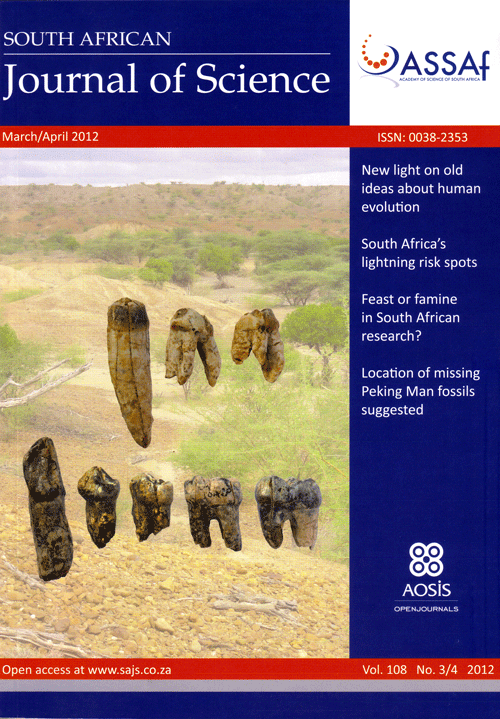Validation of remote sensing and weather model forecasts in the Agulhas ocean area to 57°S by ship observations
Keywords:
numerical weather forecast, Agulhas Retroflection, air-sea fluxes, ocean wind, remote sensingAbstract
The region south of South Africa, encompassing the Agulhas Current and Retroflection, and part of the Southern Ocean, is known for its severe meteorological conditions. Because of these conditions, in-situ observations are rare. Consequently, remote-sensing satellite observations and high-resolution regional weather forecasts at the ocean surface are difficult to assess. However, atmospheric data collected in the southern hemisphere summer of 2008 during the International Polar Year-BONUS-GoodHope campaign were used to validate two satellite data sets: the twice daily QuikSCAT winds and the daily OAflux data set of latent and sensible heat fluxes. The surface winds and heat fluxes forecasts produced by a regional atmospheric model were also assessed along the ship track. In this study, we have shown that the two data sets exhibited a very good accordance with daily in-situ observations. During the campaign, the correlation coefficients for wind speed and direction were 0.97 and 0.91, respectively, and those for latent and sensible heat fluxes were 0.92 and 0.90, respectively. The QuikSCAT wind speed was underestimated by 1.37 m/s relative to in-situ data, south of the Subtropical Front. Large differences in heat fluxes in both OAflux and the atmospheric model were observed when crossing the Subtropical Front and a warm eddy, as well as during a storm, when gale force winds reached more than 20 m/s. The two data sets were then used to assess the regional model forecasts over a larger area south of South Africa, not limited to the ship track. Most of the model errors were located in a region north of the Subtropical Front, where the sea surface temperature used by the model was not accurate enough to reproduce the relevant mesoscale oceanic features driving the spatial variability of the surface winds and heat fluxes. Finally, compared to in-situ and remote sensing observations, the numerical modelling weather forecast produced realistic atmospheric conditions over the sea south of the Subtropical Front.Published
2012-03-09
Issue
Section
Research Articles
License

All articles are published under a Creative Commons Attribution 4.0 International Licence
Copyright is retained by the authors. Readers are welcome to reproduce, share and adapt the content without permission provided the source is attributed.
Disclaimer: The publisher and editors accept no responsibility for statements made by the authors
How to Cite
Messager, C., & Faure, V. (2012). Validation of remote sensing and weather model forecasts in the Agulhas ocean area to 57°S by ship observations. South African Journal of Science, 108(3/4), 10 pages. https://sajs.co.za/article/view/9892
Views
- Abstract 160
- PDF (4MB) 253
- HTML 81
- EPUB 68
- XML 64
- Figure_1 0
- Figure_2 0
- Figure_3 0
- Figure_4 0
- Figure_5 0












.png)